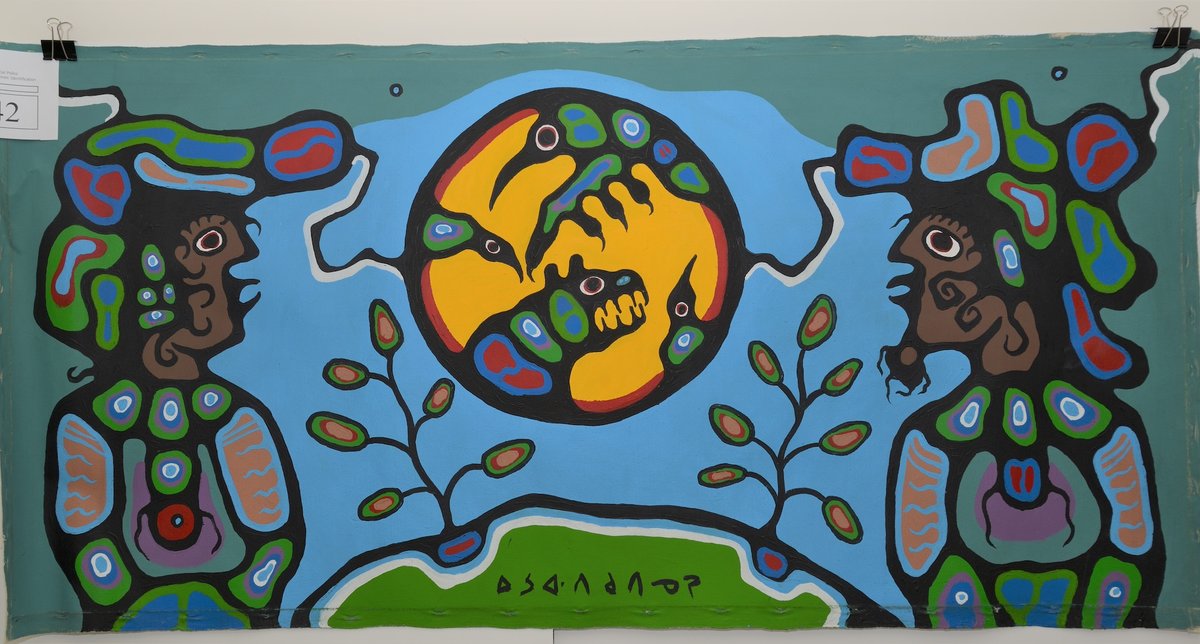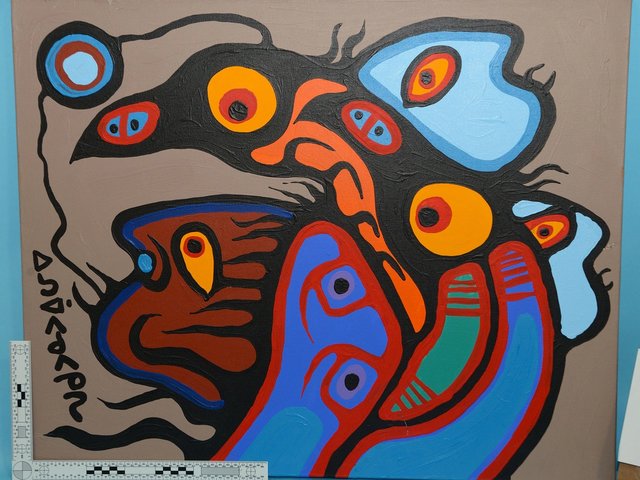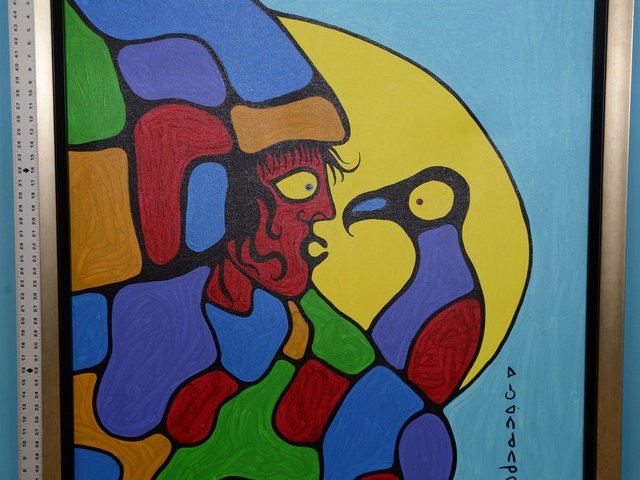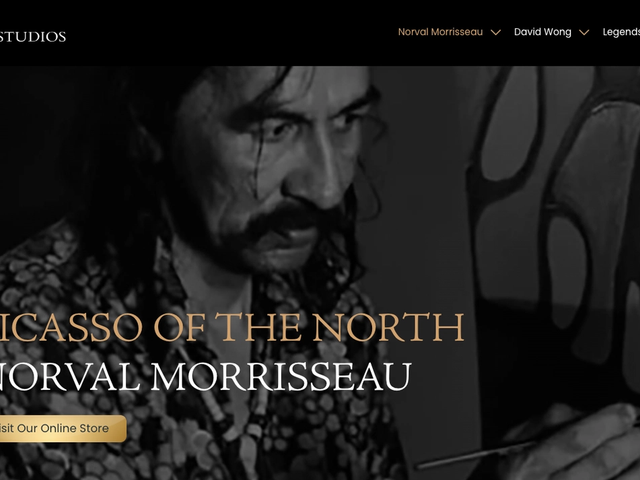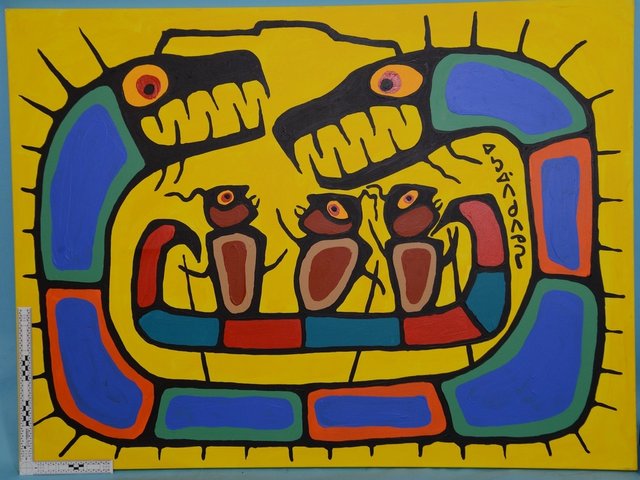David Voss, the man who was allegedly the leader of a forgery ring that Canadian authorities described as “the biggest art fraud in world history”, has pleaded guilty for his role in producing more than 1,500 fake Norval Morrisseau works. On 4 June, Voss pleaded guilty to counts of uttering forged documents and forgery, according to reports by the CBC and Globe and Mail.
According to a statement of facts read in Ontario Superior Court in Thunder Bay, Voss managed an assembly line producing Morrisseau forgeries, using a paint-by-numbers system to create works he passed off as authentic paintings by the renowned Anishinaabe artist. Voss is one of the eight people who were charged in connection with the forgery ring in March 2023, following investigations by the Ontario Provincial Police and the police service in Thunder Bay.
Morrisseau, who died in 2007, was the founder of the Woodlands School art movement, creating wildly colourful compositions melding figurative elements with ornate abstraction and Indigenous symbolism. He was a member of the Ojibway Bingwi Neyaashi Anishinaabek First Nation.
According to court statements, Voss created outlines of Morrisseau-like compositions in pencil, then used abbreviations to indicate to his accomplices, which areas should be painted in which colours—“B” for blue, ”G” for green, “LR” for light red and so on. Forensic analysts from the Canadian Conservation Institute subsequently identified dozens of forged Morrisseau works based on these carbon drawings being present beneath the paint.
Voss sold between 1,500 and 2,000 works through a range of intermediaries, including two Ontario auction houses, for prices typically between C$1,200 and C$7,000 (around $1,100-$5,100), though some sold for significantly more. To date, investigators have seized almost 500 of the Voss ring’s fake Morrisseau paintings, suggesting more than 1,000 forgeries are still in circulation in the market.
Inside the 'biggest art fraud in history': what the alleged mass forgery tells us about the market for First Nations art in Canada
Voss claimed that the Morrisseau works he was selling dated from the 1970s, and had purportedly come into his possession via his father, who he claimed was a guard at a jail in Kenora, Ontario, where Morrisseau had been incarcerated. “David Voss's father never worked as a jail guard in Kenora and never received original Norval Morrisseau paintings,” according to the statement read in court this week. “David Voss has never met, acquired artwork from or otherwise interacted with, Norval Morrisseau.”
While Morrisseau became aware of the presence of fakes in his market toward the end of his life, the 2019 documentary There Are No Fakes brought the issue to wider public attention. The film’s starting point was a lawsuit launched by the musician Kevin Hearn of the Canadian band Barenaked Ladies against the Toronto-based Maslak McLeod Gallery for selling him an alleged fake Morrisseau painting. The film went on to expose the art-fraud ring based in Thunder Bay—where the artist lived and worked for decades—and suggest that there may be up to ten times more fake Morrisseau works on the market than authentic pieces.
Voss is due back in court in September for sentencing.


